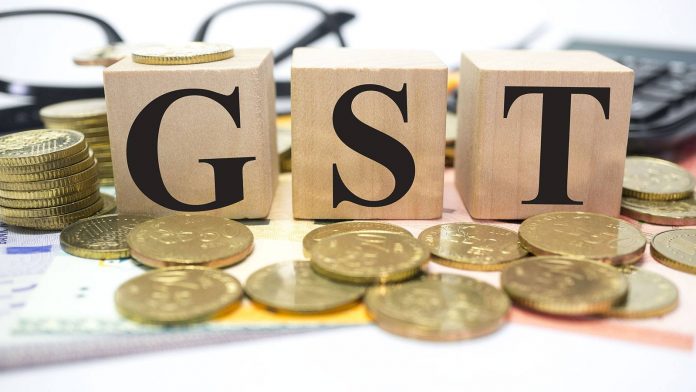This article is written by Apekshya Koirala, pursuing a Diploma in Entrepreneurship, Administration and Business Law, from Lawsikho. She is a BBA LLB 5th year student, School of Law, Sharda University.
Introduction
Before the enactment of Good and Service Tax (GST), accounting and tax professionals were authorized to file returns on behalf of the taxable person which prevailed in the indirect tax regime. Mostly Chartered Accountant (CA), Advocates and Sales Tax Practitioners used to perform the above mentioned task. With the new GST law, it seeks to formalize this modus operandi between the taxable person and the person filing returns on behalf of him by developing three-way association between a taxpayer, GST practitioner and GSTN transparent. Hence, GST practitioner is a person approved by the Central or State Government to perform certain activities on behalf of a taxpayer. As per section 2(55) of CGST Act, GST practitioner means any person who has been approved under section 48 to act as such practitioner. A registered taxable person may authorize an approved GST practitioner to furnish information on his behalf to the government. Rule 24 and 25 of the Returns rule prescribe the manner in which GST practitioner is approved. In addition to this, it lays down the eligibility conditions, their duties and obligations, the order of rejection of the application of enrolment, list of authorized GST practitioner (GSTP), authorization letter and withdrawal of authorization also. The GSTPs enrolled on the GST Network under sub-rule (2) of Rule 83 and covered by clause (b) of sub-rule (1) of Rule 83, i.e. those meeting the eligibility criteria of having enrolled as sales tax practitioners or tax return preparer under the existing law for a period not less than five years, are required to pass the said examination before 31.12.2018 in terms of the second proviso to Rule 83(3).

The functions of GST Practitioner are listed below:
- Filing of an application for fresh returns
- Filing of an application for amendment and cancellation of a registration
- To furnish details of an outward or inward supply
- To furnish monthly, quarterly, annual or final GST returns
- To make payment for credit into electronic cash ledger
- To file a claim for refund
- To represent the taxpayer under any proceeding under the act
- To file an appeal to the First Appellate authority
How to apply to be a GST Practitioner?
Under Rule 83, an electronic application may be made in FORM GST PCT – 01 under a common portal either directly or through a Facilitation Centre notified by the Commissioner for enrolment as GST practitioner by any person who is:
- a citizen of India;
- is of sound mind;
- not adjudicated as insolvent;
- has not been convicted by a competent court for an offence with imprisonment not less than two years.
Required Qualifications
- He is a retired officer of the Commercial Tax Department of any State Government or of the Central Board of Excise and Customs, Department of Revenue, Government of India, who, during his service under the Government, had worked in a post not lower in rank than that of a Group-B Gazetted officer for a period of not less than two years;
- He has enrolled as a sales tax practitioner or tax return preparer under the existing law for a period of not less than five years;
- He has passed,
- He is a Graduate or Post-graduate degree or its equivalent examination having a degree in Commerce, Law, Banking including Higher auditing, or business administration from any Indian University established by any law for the time being in force;
- A degree examination of any Foreign University recognized by any Indian University as equivalent to the degree examination mentioned in sub-clause (i)
- Any other examination notified by the Government for this purpose
- Any degree examination of an Indian University or of any Foreign University recognized by any Indian University as equivalent of the degree examination and has also passed any of the following examinations, namely: –
♣ Final examination of the Institute of Chartered Accountants of India;
♣ Final examination of the Institute of Cost Accountants of India;
♣ Final examination of the Institute of Company Secretaries of India.
A GST practitioner is required to file following forms:
- Form GST PCT 1 it is an application form for enrolling as GST practitioner
- GST PCT 2 is a form issued by authorizing officer which certifies enrolment of GST as a practitioner
- GST PCT 3 is a form for the purpose of seeking additional information as required for the purpose of enrolment and it is also a form through which a show cause notice is issued to GST practitioner for misconduct
- GST PCT 4 is a form which conveys rejection order of an enrolment application. This form also state disqualification of GST practitioner for misconduct.
- GST PCT 5, this form provides list of all GST practitioners which is maintained on the GST portal
- GST PCT 6, form authorizing GST practitioner by a taxable person on the GST portal
- GST PCT 7 it is a form which states withdrawal of authorisation of a GST practitioner by a taxable person as on the GST portal.
The National Academy of Customs, Indirect Taxes and Narcotics (NACIN) has been authorized for conducting examination for enrolment of GST Practitioner (GSTP)vide Notification No 24/2018- Central Tax dated 28.05.2018 by the Finance Ministry.
The Ministry of Finance has mandated passing of examination by a person seeking to be enrolled as GST Practitioner. A person seeking registration as GSTP must clear GSTP examination before 31st of December, 2018. The examination will be conducted twice in a Year as per schedule published on official website of NACIN. This notice will also be published on common portal, GST Council Secretariat and all leading English and Regional newspapers.
The first examination for such GSTPs has already been conducted on 31.10.2018. The next examination for them shall be conducted on 7.12.2018 from 1100hrs to 1330 hrsat designated examination centres across India.
Registration for GST Practitioner (GSTP) Examination
The eligible candidate must register himself on the online website as specified by NACIN. To register himself, he should pay registration fee as prescribed in the same website. The applicant can choose an examination centre located across the nation as designated by NACIN. Any kind of related information is available on the common portal of the Board.
Validity of GST Practitioner License
The GST practitioner license would be valid until it’s cancelled by the relevant authority.
A person seeking for GST practitioner license through tax return preparer or the sales tax practitioner route are required to pass the examination conducted by the GST Authority within one year from the implementation of GST.
The enrolment as GST practitioner will become possible only if the candidate passes the examination with due marks to be conducted by National Academy of Custom, Indirect Taxes and National Academy of Narcotics.
Online registration process
- There is a very easy way in which a qualified person can enrol himself. Firstly, visit the online GST Portal www.gst.gov.in .
- Thereafter, he has to click on ‘Services’ and then to Registration and choose new registration, form there the user will be directed to registration page.
- Here, in this page click on New registration, and then from the dropdown option select GST practitioner.
- Select the appropriate State and District, enter your Name, PAN, Email Id and mobile no in the provided column.
- Enter captcha code and then finally choose proceed option
- Once the validation is successful the user will be redirected automatically to OTP verification page.
- Then the OTP is sent in registered mobile number or email id, enter it and proceed further.
- A unique TRN would be generated automatically and click on Proceed.
- Now, enter the TRN and captcha code and again click on proceed.
- An OTP will be sent in registered mobile no, enter this OTP in provided column and then click on proceed.
- Then all the required details need to be properly given in provided column boxes and required documents should be uploaded properly in pdf. And jpeg. Format.
- After completion, click on proceed in the verification page.
For the successful submission of application form, there are two ways that needs to be performed;
- Application can be successfully submitted through DSC token.
- Evc and E- signature – enter both the OTP sent on your mobile number and email id and your email id, the mobile number should have been linked with the Adhaar and then click on the submit button.
After completion of the above-mentioned process, success message appears and within 15 days from the date of submission an acknowledgement mail would be sent on one’s official mail id.
Roles/Responsibilities of GST Practitioner
- File GSTR 1 AND GSTR 2
- Furnish GSTR 3 AND GSTR 9
- File a claim for refund after confirmation from registered person
- Make deposit for credit into electronic cash ledger
- File an application for amendment or cancellation of registration after confirmation from registered person
- Appear as an authorised representative.
- GST practitioners are required to prepare statements once authorized; they must affix the digital signature of the taxable person on the same once the statements have been confirmed and verified – the taxable person receives a confirmatory text message/email which he must confirm
- It is the responsibility of the taxable person to ensure that all the information furnished is correct and accurate to the best of his knowledge – in case of absence of confirmation by the taxable person, it will be considered as confirmed.
- In case the taxable person wishes to withdraw consent and authorization is given to the GST practitioner, he may do so by way of Form GST PCT-7.
The process of filing returns by a GST practitioner can only be initiated if the GST practitioner has been authorized to do so by the taxable person. The details of such authorization are maintained on the common GST portal. Once a GST practitioner has been authorized to conduct activities on behalf of a taxable person, he may prepare statements, furnish information and then get the same verified and confirmed by the taxable person.
Conclusion
With the implementation of GST Act, various arenas of practice have emerged, out of these areas, it also created scope for an individual to become a GST practitioner. Any individual after fulfilment of required qualification and passing of an examination can register himself to be a GSTP. It gives autonomy to a licensed GSTP to file various forms on behalf of his clients, wherein he can also make deposit for credit into electronic cash ledger. The practitioner can on the prior approval of his client file for a refund claim, serve an application to make an amendment or cancellation of the registration. This in itself has created an independent form of practice thereby, making it a very lucrative form of a profession. Not only that, the GST Practitioner under his own discretion can choose to be a taxpayer’s consultant by either accepting or rejecting taxpayer’s application from the online list of engaged taxpayers in his account. Besides these advantages GST Practitioner can also offer offline services such as; by helping taxpayer to generate e waybill for movement of goods, issuance of tax invoices, delivery challan, cancellation and provide them with new updates occurring around GST.
Students of Lawsikho courses regularly produce writing assignments and work on practical exercises as a part of their coursework and develop themselves in real-life practical skill.
 Serato DJ Crack 2025Serato DJ PRO Crack
Serato DJ Crack 2025Serato DJ PRO Crack











 Allow notifications
Allow notifications



